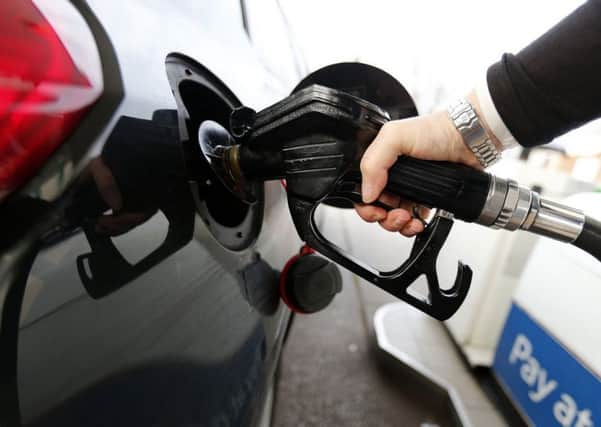Inflation holds steady amid falling prices at the pumps
This article contains affiliate links. We may earn a small commission on items purchased through this article, but that does not affect our editorial judgement.


Although the reading remains well above the Bank of England’s target of 2 per cent, it was slightly lower than expected, as most economists had pencilled in a modest rise to 2.7 per cent.
• READ MORE: Markets and economy news
The ONS said the price of motor fuel continued to fall and provided the largest downward contribution to the rate of inflation between June and July. Petrol dropped by 1.4p month-on-month to 113.9p a litre, while diesel slipped by 1.7p to 115.6p.
Advertisement
Hide AdAdvertisement
Hide Ad“This was offset by smaller upward contributions from a range of goods and services, including clothing, household goods, gas and electricity, and food and non-alcoholic beverages,” the ONS added.
But rail passengers will see fares rise by 3.6 per cent when price changes come into force in the new year, as the ONS said the retail prices index (RPI) measure of inflation, which is used to calculate train ticket prices, rose by 3.6 per cent in July, up from 3.5 per cent the previous month.
James Tucker, ONS head of consumer price inflation, said: “Falling fuel prices offset by the costs of food, clothing and household goods left the headline rate of inflation unchanged in July.”
Sterling, already under pressure amid political confusion over Brexit, dipped on the news. The pound was trading 0.3 per cent lower against the dollar at $1.29 and 0.1 per cent lower verses the euro at €1.09.
Households have seen their spending power come under sustained pressure from lacklustre wage growth and higher inflation, triggering an increase in credit and a decline in savings.
Clothing and footwear prices were putting upward pressure on CPI after recording a smaller fall of 3 per cent between June and July, compared to a 3.4 per cent drop last year.
Utility bills were also pricier last month, with electricity, gas and other fuels lifting 0.8 per cent after coming in flat over the period in 2016.
Advertisement
Hide AdAdvertisement
Hide AdThe CPI including owner-occupiers’ housing costs (CPIH) also remained at 2.6 per cent in July, in line with the rate for June.
CPIH is the ONS’s preferred measure of inflation, which includes costs associated with living in, maintaining and owning a home.